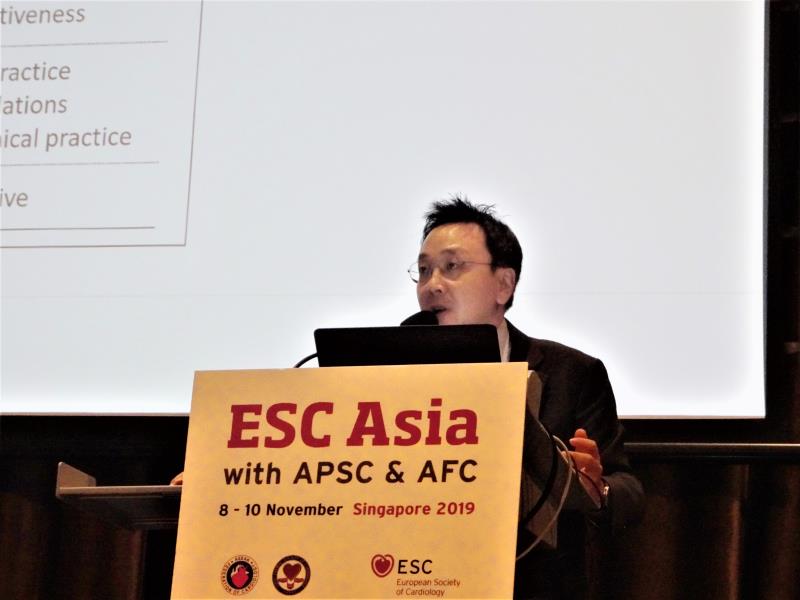
The trade-off between the risk of ischaemic vs bleeding events may be different between Asian and non-Asian patients, which warrants careful consideration when deciding on the duration of antiplatelet therapy following a percutaneous coronary intervention (PCI), according to a presentation at ESC Asia Congress 2019.
As there is a high proportion of cardiovascular disease (CVD) patients with comorbid diabetes in Asia, one question that stood out was: Does diabetes matter in all-comer PCI in Asians?
Putting the latest ESC guidelines on CVD in diabetes into Asian perspective, Dr Park Kyung Woo from the Seoul National University Hospital in Seoul, South Korea highlighted that having diabetes was associated with worse outcomes even with second generation drug-eluting stents (DES) in East Asian patients enrolled in the prospective EXCELLENT and RESOLUTE-Korea* registries. [JACC Cardiovasc Interv 2014;7:471-481]
Compared with patients without diabetes, their diabetic counterparts who were undergoing PCI had a significantly higher incidence of target lesion failure (p=0.007) and patient-oriented composite events of all-cause mortality, myocardial infarction, and any revascularization (p=0.001).
“Diabetes is still a significant predictor of adverse events even in the era of newer generation DES after revascularization,” said Park.
Then, do we prolonged DAPT in all diabetic patients? To this, Park answered “No.”
“Just because diabetic patients have an increased risk of MACE** doesn't mean that we should prolong DAPT*** after PCI as these patients also have increased risk of bleeding,” noted Park.
In a meta-analysis using data pooled from six DAPT randomized controlled trials (RCTs), long-term DAPT did not lower the risk of MACE, but instead, increased the risk of bleeding compared with short-term DAPT in patients following PCI. [BMJ 2016;355:i5483]
When the patients were stratified by diabetes status, the increase in bleeding risk with long-term DAPT was significant in the subgroup with diabetes (hazard ratio [HR], 1.89; p=0.02), although it was not statistically significant in patients without diabetes (hazard ratio [HR], 1.43; p=0.08). [BMJ 2016;355:i5483]
Furthermore, East Asians appeared to have a different relative trade-off between ischaemic and bleeding risk — with a higher bleeding risk but a lower ischaemic risk — than their non-East Asian counterparts. In this case, prolonged DAPT might not only have no effect in reducing ischaemic risk among East Asians, it could increase the risk of bleeding, said Park.
Based on another meta-analysis of seven RCTs comparing short- vs long-term DAPT, prolonged DAPT after PCI more than doubled the risk of major bleeding among East Asians (HR, 2.843; p=0.002), but not in non-East Asians (HR, 1.375; p=0.523). [Thromb Haemost 2019;119:149-162]
“[This suggests that] the race or ethnicity factor may need to be taken into account when deciding on the duration of DAPT in patients undergoing PCI,” advised Park.
Explaining on the possible reasons behind the differences in response to antiplatelet therapy between Westerners and East Asians, Park said this may be due to the different genetics of drug metabolism, patient BMI and volume of distribution, and relative trade-off between ischaemia and bleeding in Asian vs non-Asian patients.